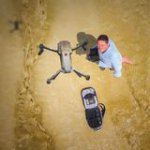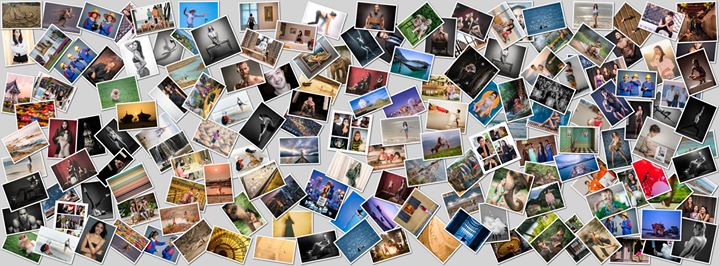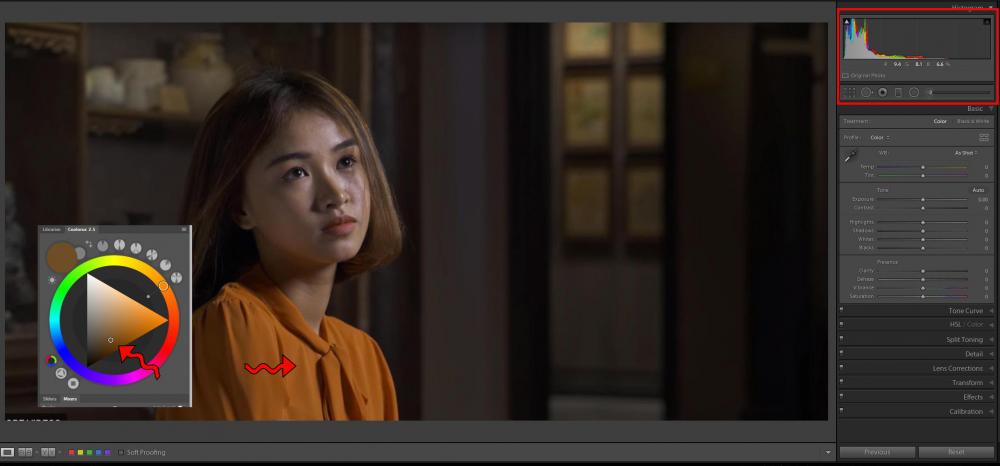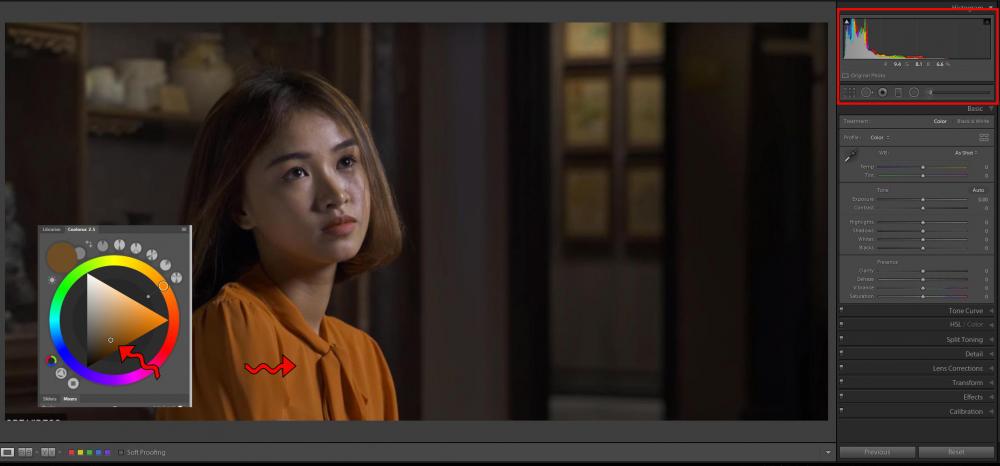-
Posts
779 -
Joined
-
Last visited
Content Type
Profiles
Forums
Articles
Everything posted by Robert Collins
-

How Many Stops of Dynamic Range Needed for Cinematic Look?
Robert Collins replied to jonpais's topic in Cameras
Taking a look at the Yedlin footage what seems interesting is how little dynamic range is in the 'final output' when compared to how much dynamic range is in the scene. Note the limited DR in the histogram. The footage is also very desaturated. (The camera angle and limited color gamut also seems cinematic.) Take a vaguely similar shot with a digital camera. Straight out of camera it looks something like this... (A7r3) Note that this has bags more dynamic range - it fills the entire histogram and the colors are much more saturated. And that it looks 'digital' However, if you make a tonal adjustment (see below) which compresses the dynamic range - see histogram and tone curve (by raising the blacks and lowering the whites). And reduce the saturation (see below), the photo appears more cinematic... So my feeling is having quite a low dynamic range in your final output is quite key to a cinematic look. Of course you can achieve that with a high dynamic range scene given enough processing leeway (either in camera or post.) Or alternatively, you could achieve it with an iphone given enough additional lighting equipment I would imagine. -
BTW the classic example of our 'perception of color' on the internet is 'what color are the strawberries?' The answer is they are 'cyan' - if you dont believe me download the photo and check for yourself. It is because our brain sets a white point and we perceive colors relative to it.
-
If you actually believe there is something such as 'REAL' color, you clearly dont understand how our brains work.
-
If you take this screenshot from Jon's video.... ...we perceive the highlight on her forehead as a 'highlight' when in fact it is a 'mid tone'. We perceive the highlight as 'white' or slightly 'blue' when it is in fact 'red'.
-
Conceptually noone sees 'REAL colors' we 'perceive' colors. The same color will 'look different' to us with a different background. The same applies to 'luminosity' - we only perceive it rather than 'see' it in absolute terms.
-

How Many Stops of Dynamic Range Needed for Cinematic Look?
Robert Collins replied to jonpais's topic in Cameras
My feeling is that there is an element to which the 'filmic look' gets confused with dynamic range. For instance, we tend to associate 'log' footage with both 'high dynamic range' and the 'filmic look'. Log footage is 'low contrast' and 'low saturation' irrespective of how much dynamic range is actually in the scene. And we associate low contrast and low saturation with a filmic look. If you take a look at Jon's footage, you can see it doesnt contain a lot of stops of dynamic range (see histogram) and even the orange shirt is pretty desaturated (see color wheel). -
It is simply a trade off of sensor size. The smaller the sensor the easier it is to stabilize. So all things being equal with ibis - M43>APSC>FF.
-

Canon Full Frame Mirrorless is just around the corner?
Robert Collins replied to IronFilm's topic in Cameras
Yes, the underlying problem with the EF lenses is that they dont have 'stepping motors' (apart from the EF-M lenses) which are basically a prerequisite for fast, efficient CDAF. So ultimately you are going to have to replace the lenses for a 'pro/efficient' mirrorless, so you might as well design the mount specifically for that. Then add an adapter. I think 'all' Canon has to really do is make sure the adapter works at least as well as the Sony/EF adapters. -

Highlight Roll-Off: GH5, GH5s, A7III and X-H1 and ???
Robert Collins replied to ajay's topic in Cameras
There is a trade off between your base iso setting between dynamic range and lowlight. The lower you set your base iso the more dynamic range you can have on the sensor because the more light you can get on it without clipping. However, the downside is that your lowlight performance will tend to be worse because you have to have more 'gain' to reach any given higher iso. A good example of this is the D850 v A7riii The D850 has better DR because of its lower base iso but the A7riii has better lowlight helped by having a higher base iso. https://www.dxomark.com/Cameras/Compare/Side-by-side/Sony-A7R-III-versus-Nikon-D850___1187_1177 BTW just to show Sony's fake sLog iso... I know the same applies to the A7riii. In all likelihood Panasonic is doing the same thing with the GHH5/s. -

Highlight Roll-Off: GH5, GH5s, A7III and X-H1 and ???
Robert Collins replied to ajay's topic in Cameras
My feeling is that Log isos are fake. I know for sure that with Sony while log states iso800, it actually records at its base iso of 100 (which is why you have to over expose +2 stops). I suspect that with Vlog while it states iso400, it actually records at the base iso of 200 (which is why it adjusts the metering one stop in camera.) Having said that, the fact that the Sony has a base iso of 100 gives it a DR advantage at base iso over Fuji/Panasonic with a base iso of 200 because it allows the sensor to collect more light without clipping (much the same way that the D850 has a DR advantage over Sony at base iso because its base iso is 64.) -

Highlight Roll-Off: GH5, GH5s, A7III and X-H1 and ???
Robert Collins replied to ajay's topic in Cameras
Well presumably there are 2 different tests. Relative dynamic ranges at 'base iso' and relative DR at higher isos (or low light). They are not the same - for instance Canon sensors have much lower DR than Sony sensors at base iso but they are pretty similar at higher isos. The 'Op' seems more interested in relative DR at base iso. -

Highlight Roll-Off: GH5, GH5s, A7III and X-H1 and ???
Robert Collins replied to ajay's topic in Cameras
Yes, I think that is self evident. Take a shot jpeg (8 bit) and raw (14 bit) and you can recover 1 to 2 more stops in raw. Also bit rate will effect DR - I can recover more highlights in a jpeg still than in the more heavily compressed video. These factors would certainly help both the GH5 and X-H1 get closer to A7iii DR in video relative to stills than the sensor size difference might imply. -
Interesting he says that the video is slightly better on the A7iii than the A7riii. I guess he means the FF 4k video.
-
Shouldnt this thread be closed?
-
An electronic variable ND filter would be a great feature but I read somewhere that Sony engineers said there wasnt enough room for one in an A7 body.
-
I think we are on the same page here. I really wish Sony would be more transparent about their plans for the A7siii. I am in the market for another A7xiii body but want to wait to see if I should get the A7siii. I suspect others are in a similar position. Obviously telling people your plans can harm existing sales but I doubt anyone is really buying a new A7sii at this stage.
-
In his latest tweets 'ositalv' says that in the 3rd beta version of the Mavic 2 prototype, DJI reduced the size of the sensor from 1' to 1/1.7'. Apparently it is probably the Sony imx226 sensor which at least does 4k 60. But disappointing. May have to wait for the Phantom 5.
-
I am not sure that is the right way of looking at it. Sony is dealing with a sensor 4x the size of M43. That brings advantages in terms, of noise, DR and Dof. At the same time it likely means that they cant match M43/GH5 in the same form factor in terms of fps, bit depth and bit output for video.
-
Honestly, all I really know is these conversations get horribly complicated, incredibly quickly. High isos provide benefits in low light by reducing read noise especially in low bit and dual isos can provide benefits in terms of cleaner images at high isos. When it gets to the stage of adding 6 stop NDs to reduce light on a sensor, so you can shoot at high isos (like 3200) when an iso is effectively an electronic gain of existing light (which is bound to increase noise), it all begins to sound like nonsense!! I also think it is unnecessary (for say my camera to say it is at iso800 when it is at iso100 internally). We are not supposed to be electrical engineers...
-
Actually this is a bit misleading. For instance, with the Sony A7r3 if you shoot sLog2 your minimum iso is iso800 and this should give you max DR. But if you examine the data (see Iliah Borg, Rawdigger) you will find that the A7r3 'actually' shoots the footage at iso100 (rather than iso800). Which explains why you have to shoot 8bit video in sLog - 2 stops overexposed!!
-

Canon Full Frame Mirrorless is just around the corner?
Robert Collins replied to IronFilm's topic in Cameras
True. However, I also think the opposite is true. Sony came out with the A7iii at a very aggressive price point because they were well aware that Canon and Nikon were likely to enter the high end mirrorless market within the next 12 months. -
That has been my experience when comparing my Batis 85 to my GM 85 on the A7riii for video.
-
Havent Sony had dual iso for years - at least back to the A7RII. Certainly seems like it from the numbers....
-
True. But if you increase the 'form factor', keep the ibis, throw in a variable electronic nd filter and a flippy screen, all you end up with is an FS5 mkii rather than an A7siii....
-
https://www.dxomark.com/Cameras/Compare/Side-by-side/Sony-A7-III-versus-Sony-A7R-III-versus-Sony-a9___1236_1187_1162 BTW the DXOmark numbers have been released on the A7iii. There are no surprises but they are impressive - they are well within spitting distance of the A7riii and the D850. The question is where does this leave an A7siii? I know absolutely nothing but I am pretty skeptical we are going to see one soon... 1) Just looking at the numbers there seems no real justification for a 12mp sensor for US$3,000 - the delta on the lowlight performance I think would simply be too low to make it worthwhile simply because the A7iii at US$2,000 is so good.... 2) Of course, there is still room for internal 10 bit recording and/or say 4k/60 but I am not convinced given all the overheating problems that Sony (and actually pretty much everyone else has had) in recent years, that Sony can provide that with a FF sensor.... 3) There is perhaps the potential to take the A9 sensor and its insanely good sensor readout of data to make a video cam with next to no rolling shutter but as we didnt see that with the A9, I kinda doubt it....


.thumb.jpg.0424d6aa157433b8de8d044cfec3933b.jpg)
.thumb.jpg.1dbd64cd374821d1b0bfc9bea73994b4.jpg)
.thumb.jpg.cfce173fde49aed7a9644028302e23cd.jpg)





.thumb.jpg.be8bda94400b94df147c6eba9ab95770.jpg)